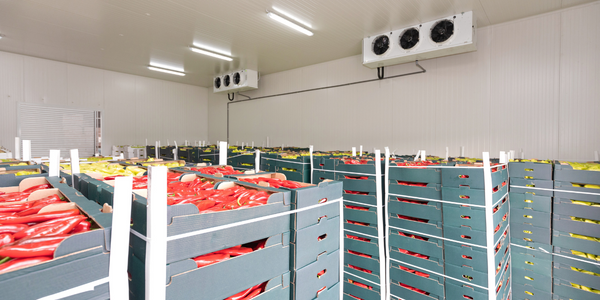Technology Category
- Analytics & Modeling - Predictive Analytics
- Analytics & Modeling - Real Time Analytics
Applicable Industries
- E-Commerce
- Transportation
Applicable Functions
- Facility Management
- Logistics & Transportation
Use Cases
- Last Mile Delivery
- Real-Time Location System (RTLS)
Services
- Hardware Design & Engineering Services
- System Integration
About The Customer
Pitney Bowes is a global technology company that simplifies the complexities of e-commerce, shipping, and mailing. The company manages 400 million mail parcels annually across 16 distribution facilities and serves 750,000 businesses worldwide. With over 11,000 employees, Pitney Bowes is a major player in the e-commerce, shipping, and mailing industry. The company's services are critical for businesses worldwide, and its ability to manage and track parcels effectively and efficiently is key to its success. The company's recent data stack modernization has enabled it to track every individual parcel and predict changes in mail volumes, thereby forecasting labor needs on a per-facility basis.
The Challenge
Pitney Bowes, a global technology company that simplifies e-commerce, shipping, and mailing, was facing significant challenges with its data management. The company lacked high-quality, real-time data necessary for critical business decisions. Its Enterprise Information Management (EIM) team was grappling with siloed data, lack of scalability, and inefficient tech spending. Employees were resorting to pasting data into Excel spreadsheets for executive reporting and analytics, which often exacerbated the issues. The company was also experiencing downstream problems, such as late-arriving packages that impacted Service Level Agreement (SLA) targets. They lacked the sophistication to detect delays and notify customers in time, causing reputational risk. The COVID pandemic magnified these data challenges when online shopping increased tenfold, leading to a tenfold increase in parcel volume. The company's legacy data infrastructure was unable to handle event- and email-based data operations for 800 million packages per day. The data captured was critical, but aggregating and consolidating it to the central analytics warehouse took days, making it outdated by the time it reached the leadership team.
The Solution
Pitney Bowes decided to modernize its data stack by implementing Fivetran and Snowflake. Fivetran replaced all of Pitney Bowes' custom batch scripts and extract, transform, load (ETL) processes. The team used Fivetran’s out-of-the-box connectors to quickly build pipelines for several business-critical apps like SAP, Salesforce, Facebook, Kafka, and Kinesis. Fivetran was able to decrease one batch load from 31 hours to under two hours, and another from days to under one hour. This new data flow efficiently collected and aggregated data from 700,000 IoT devices at 16 facilities. Fivetran’s log-based change data capture (CDC) connectors captured all data changes and eliminated the processing load time and impact on the source systems. Fivetran Local Data Processing helped Pitney Bowes move high volumes of data and eliminated its infrastructure bottlenecks. The team also leveraged Fivetran Local Data Processing to sync SAP data, which was previously a challenge. Fivetran’s SAP connector performed full syncs of high volume data to Snowflake in under seven hours, a significant increase in performance.
Operational Impact
Quantitative Benefit

Case Study missing?
Start adding your own!
Register with your work email and create a new case study profile for your business.
Related Case Studies.

Case Study
Airport SCADA Systems Improve Service Levels
Modern airports are one of the busiest environments on Earth and rely on process automation equipment to ensure service operators achieve their KPIs. Increasingly airport SCADA systems are being used to control all aspects of the operation and associated facilities. This is because unplanned system downtime can cost dearly, both in terms of reduced revenues and the associated loss of customer satisfaction due to inevitable travel inconvenience and disruption.

Case Study
IoT-based Fleet Intelligence Innovation
Speed to market is precious for DRVR, a rapidly growing start-up company. With a business model dependent on reliable mobile data, managers were spending their lives trying to negotiate data roaming deals with mobile network operators in different countries. And, even then, service quality was a constant concern.

Case Study
Digitize Railway with Deutsche Bahn
To reduce maintenance costs and delay-causing failures for Deutsche Bahn. They need manual measurements by a position measurement system based on custom-made MEMS sensor clusters, which allow autonomous and continuous monitoring with wireless data transmission and long battery. They were looking for data pre-processing solution in the sensor and machine learning algorithms in the cloud so as to detect critical wear.

Case Study
Cold Chain Transportation and Refrigerated Fleet Management System
1) Create a digital connected transportation solution to retrofit cold chain trailers with real-time tracking and controls. 2) Prevent multi-million dollar losses due to theft or spoilage. 3) Deliver a digital chain-of-custody solution for door to door load monitoring and security. 4) Provide a trusted multi-fleet solution in a single application with granular data and access controls.

Case Study
Vehicle Fleet Analytics
Organizations frequently implement a maintenance strategy for their fleets of vehicles using a combination of time and usage based maintenance schedules. While effective as a whole, time and usage based schedules do not take into account driving patterns, environmental factors, and sensors currently deployed within the vehicle measuring crank voltage, ignition voltage, and acceleration, all of which have a significant influence on the overall health of the vehicle.In a typical fleet, a large percentage of road calls are related to electrical failure, with battery failure being a common cause. Battery failures result in unmet service agreement levels and costly re-adjustment of scheduled to provide replacement vehicles. To reduce the impact of unplanned maintenance, the transportation logistics company was interested in a trial of C3 Vehicle Fleet Analytics.

Case Study
3M Gains Real-Time Insight with Cloud Solution
The company has a long track record of innovative technology solutions. For example, 3M helps its customers optimize parking operations by automating fee collection and other processes. To improve support for this rapidly expanding segment, 3M needed to automate its own data collection and reporting. The company had recently purchased the assets of parking, tolling, and automatic license plate reader businesses, and required better insight into these acquisitions. Chad Reed, Global Business Manager for 3M Parking Systems, says, “With thousands of installations across the world, we couldn’t keep track of our software and hardware deployments, which made it difficult to understand our market penetration.” 3M wanted a tracking application that sales staff could use to get real-time information about the type and location of 3M products in parking lots and garages. So that it could be used on-site with potential customers, the solution would have to provide access to data anytime, anywhere, and from an array of mobile devices. Jason Fox, Mobile Application Architect at 3M, upped the ante by volunteering to deliver the new app in one weekend. For Fox and his team, these requirements meant turning to the cloud instead of an on-premises datacenter. “My first thought was to go directly to the cloud because we needed to provide access not only to our salespeople, but to resellers who didn’t have access to our internal network,” says Fox. “The cloud just seemed like a logical choice.”



